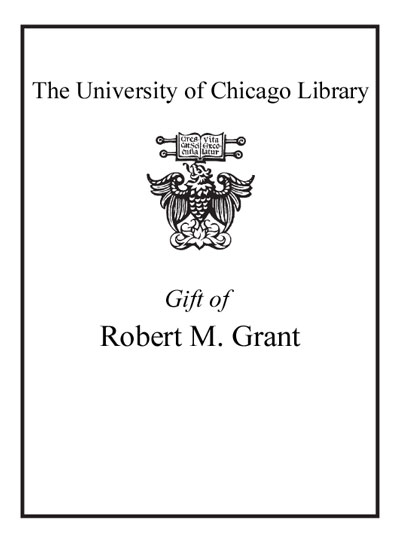Review by Choice Review
This volume is the newest installment in the Eerdmans' "Studying the Historical Jesus" series, whose purpose is to "explore key questions concerning Jesus in recent discussion." Van Voorst (Union Theological Seminary) addresses the key question "Did Jesus really exist?" While admitting that most contemporary scholars and historians reject the nonexistence theory, the author provides the uninitiated with an overview of the evidence, all of which lies outside the canonical New Testament. The book is organized by text categories, such as non-Christian classical writings, Jewish writings, Christian writings after the New Testament period (e.g., Gospel of Thomas), and the hypothetical sources of the canonical Gospels (e.g., the "sayings source"). The existence of Jesus is a topic much dealt with in recent years, but in a less objective manner (see Gary Habermas's The Historical Jesus, 1996). Van Voorst's style is both readable and objective, and he poses questions that more skeptical readers would raise, such as "Are these texts reliable?" and "Why is there not more ancient evidence for the historical Jesus?" In the process he supplies a wealth of notations for those interested in further study, making it an ideal primer for all levels of university students, as well as general readers. W. E. Osburn; Institute for Christian Studies
Copyright American Library Association, used with permission.
Review by Publisher's Weekly Review
This book's aim is promising: to evaluate the evidence we have, outside of the Christian scriptures themselves, for the life and teaching of Jesus of Nazareth. Van Voorst is a capable guide to this territory, which ranges from citations in Roman correspondence to the early Christian writings often called the "New Testament Apocrypha." His lucid and judicious account of the state of scholarship will be most helpful to seminary students and others beginning to engage this material. Unfortunately if inevitably, the different sources are treated unevenly, with the very well-known classical quotations from Tacitus, Pliny and the like receiving extensive treatment while the more lengthy--and debated--proto-gnostic texts receive scant attention. Van Voorst devotes a surprising amount of energy to refuting the idea that Jesus never existed. He also includes a long and inconclusive chapter about what we can learn from the assumed sources of the New Testament itself, which is more a tutorial in 20th-century scholarship than evidence from "outside" the New Testament. Seminary professors will want to consider assigning this book, but those looking for revelations about Jesus of Nazareth will be disappointed, since after much scholarly muckraking the author himself concludes that the New Testament is our best evidence after all. Better to turn to works like John Meier's A Marginal Jew for more fully considered and provocative accounts of the historical Jesus. (May) (c) Copyright PWxyz, LLC. All rights reserved
(c) Copyright PWxyz, LLC. All rights reserved
Review by Library Journal Review
Van Voorst has written a comprehensive, rigorously focused survey of the evidence for the life, death, and resurrection of Jesus as manifested by the written sources other than the New Testament. He has translated all relevant passages into contemporary English and presents the most important issues in their interpretation. After a brief survey of the history and principles of historical Jesus research, he takes up the evidence from Classical writers, Jewish writers, the "sources" of the gospels, and Christian writings after the New Testament. He finds that while some of the Classical and Jewish writings are not useful or reliable, others are surprisingly helpful albeit quite sketchy in details. The "sources" are controversial, while the writings subsequent to the New Testament are derived from the New Testament and therefore of no value as historical witnesses. Van Voorst (The Ascents of James) is an established, careful scholar who has adopted a critical but responsible middle-of-the-road stance. This very well-organized and -written book fills a comparative void left by the deluge of historical Jesus books. It will be valuable for those interested in the historical grounding of their faith.DEugene O. Bowser, Univ. of Northern Colorado, Greeley (c) Copyright 2010. Library Journals LLC, a wholly owned subsidiary of Media Source, Inc. No redistribution permitted.
(c) Copyright Library Journals LLC, a wholly owned subsidiary of Media Source, Inc. No redistribution permitted.
Review by Choice Review
Review by Publisher's Weekly Review
Review by Library Journal Review

